Garmin unveils ‘most dynamic indoor riding experience yet’ with Tacx Neo Motion plate launch
The new Motion Plates add front-to-back movement to the lateral flex and surface simulation of Tacx Neo trainers
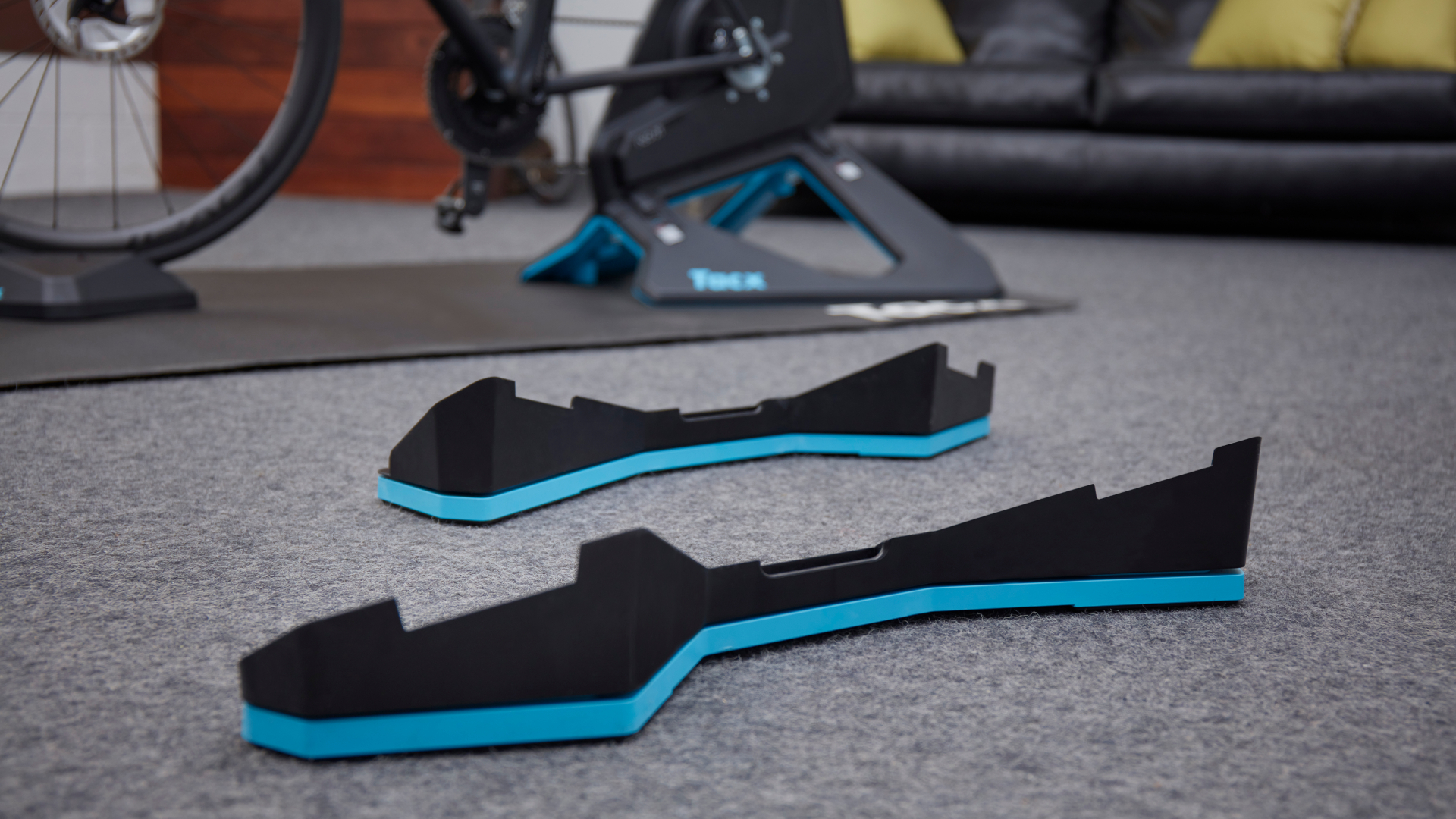

Garmin has just launched its Tacx Neo Motion Plates, designed to complement the built-in lateral movement of Tacx Neo turbo trainers with the addition of front-to-back movement – aiming to better simulate the experience of riding outdoors.
The Motion Plates attach magnetically to the base of the Neo turbo trainers, making setup quick and tool-free. It also means that the footprint of the Neo stays about the same, so, unlike a bulky rocker plate system, the trainers remain as easy to stow away post-session as before.
Between the built in lateral flex and ability to simulate different road surfaces – from cobbles to gravel to wooden boards – this forwards and backwards movement of the Motion Plates is another piece in the puzzle of bringing an outdoor ride feel inside.
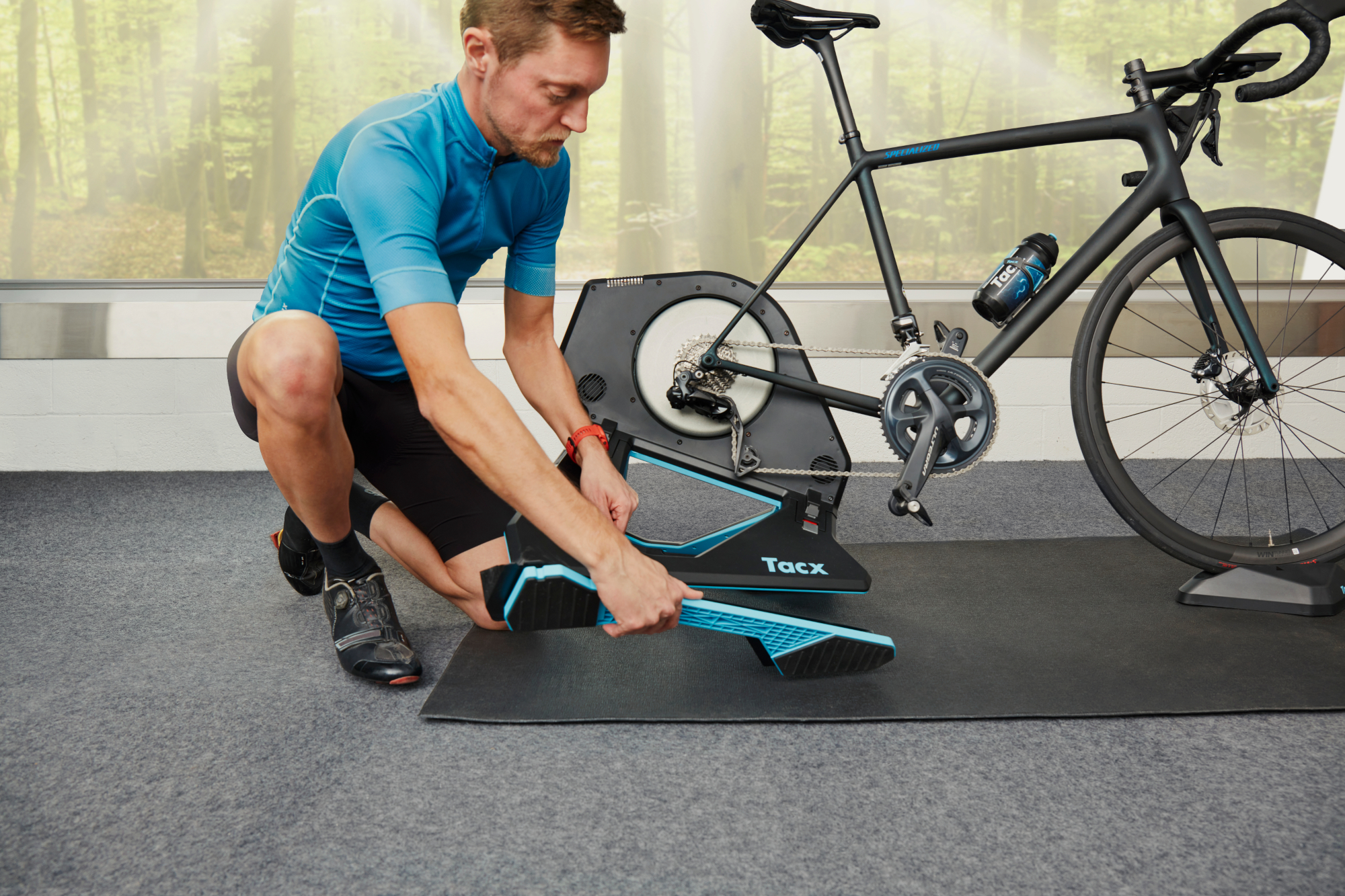
Rich Robinson, Garmin’s head of product, admitted that early spring might strike as a bit of a surprising time to launch a new indoor training product, perhaps these days it shouldn’t come so much as a surprise.
“Indoor training has been completely transformed in the past decade," Robinson said, "I remember the days when I’d spend my sessions staring at the garage wall and thrashing away on noisy, wheel-on turbo trainers – it was unpleasant.”
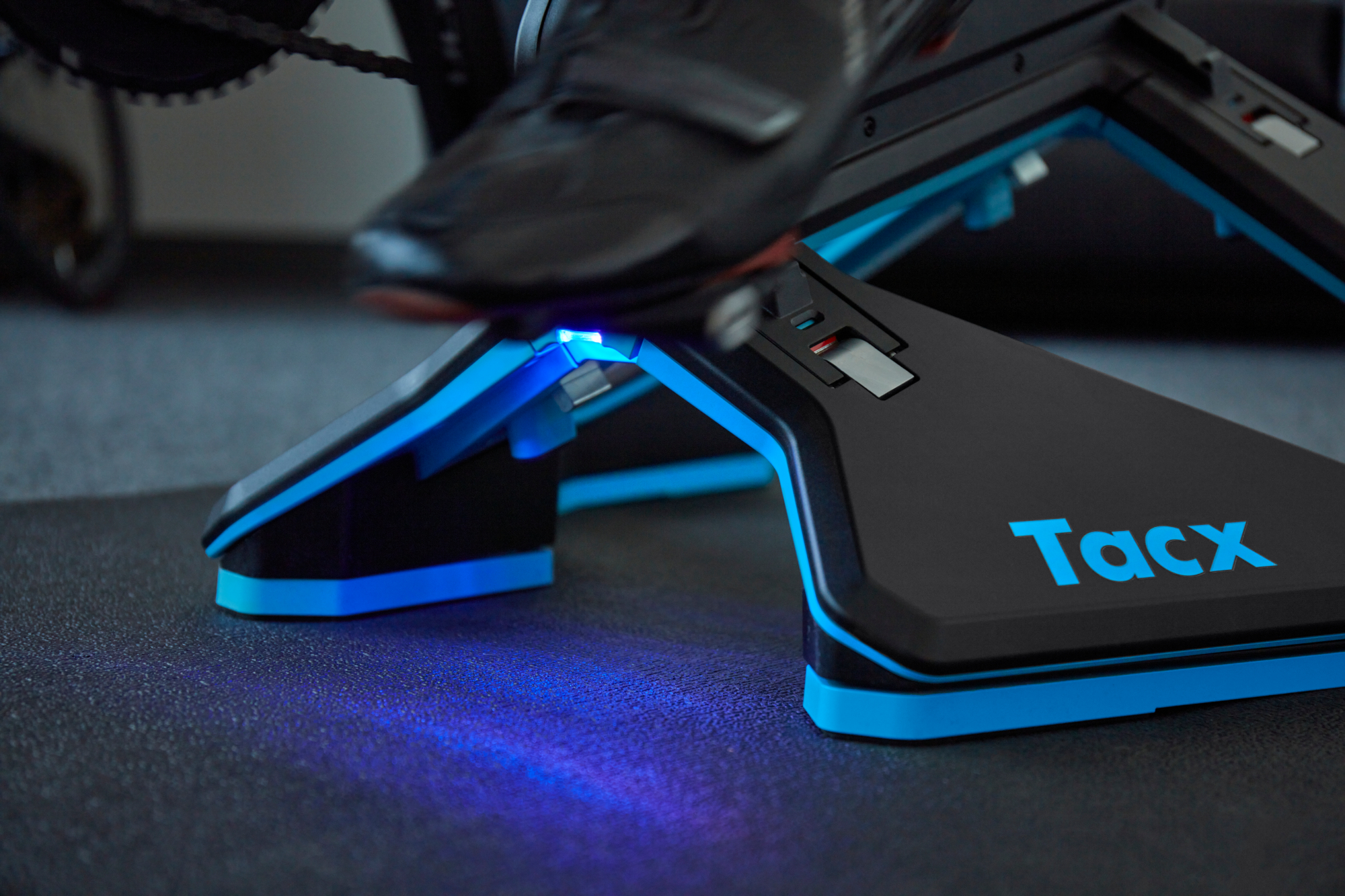
“with turbos and training software where they are now, as with a lot of people, indoor sessions are a feature of my training year round. When I’m pushed for time during the week, having that controlled environment is so much more efficient and allows me to get a much more targeted workout in.”
“That’s who the Motion Plate is aimed at – the person riding indoors by choice and who’s looking to further optimise their experience with a closer simulation of the feeling of riding outdoors.”
The latest race content, interviews, features, reviews and expert buying guides, direct to your inbox!
The Tacx NEO Motion Plates have a suggested retail price of £259.99 / $299.99 and are available now on garmin.com.
Tacx NEO Motion Plate: first ride review
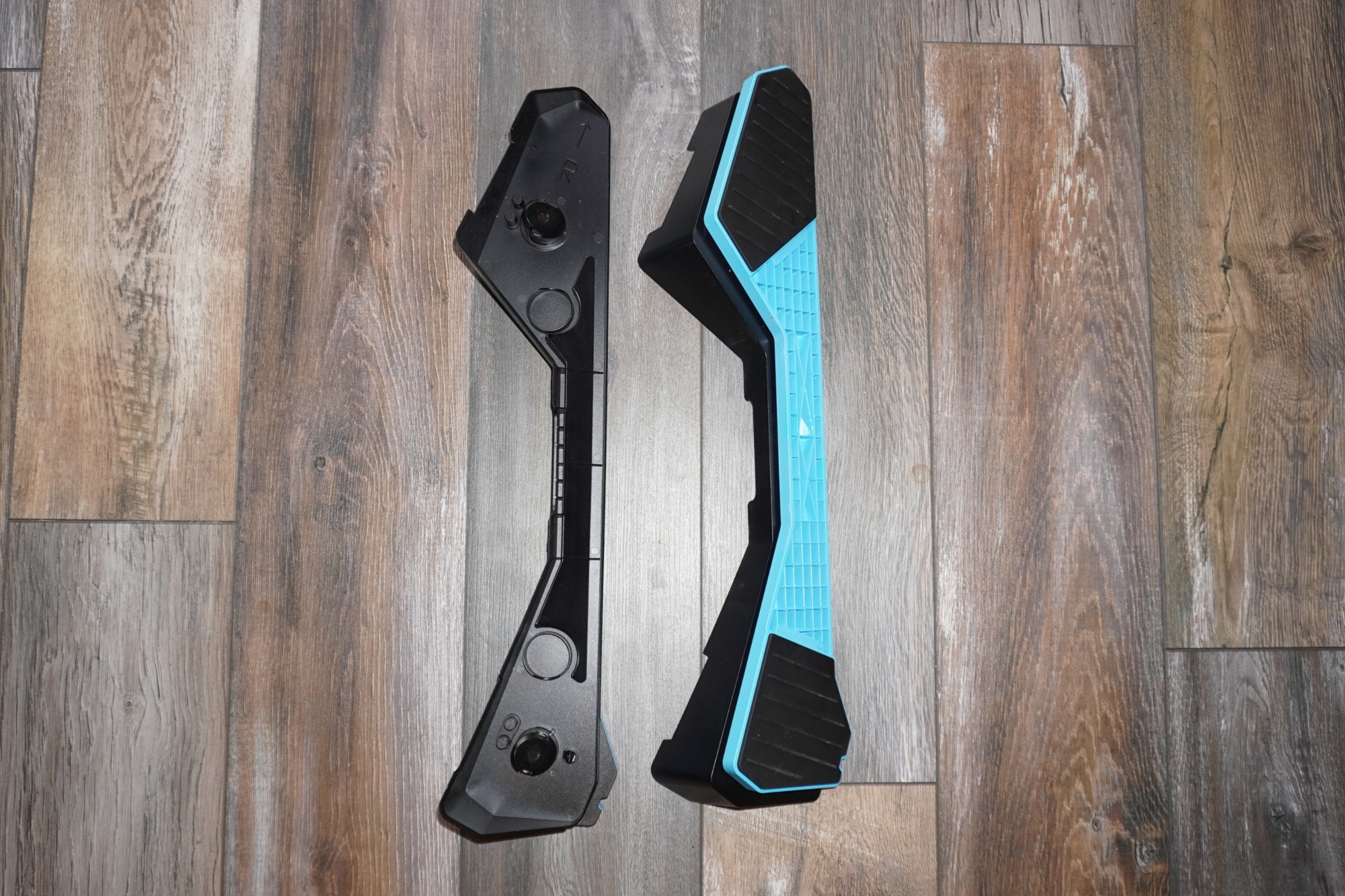
Setting up a Tacx Neo 2T with the Motion Plates was a complete breeze. After taking the circular rubber feet off the Neo, the plates snapped immediately into place in just a handful of seconds. Thoughtfully, the plates have little storage ports for keeping those rubber feet, ready for if you ever wish to use your turbo with the plates again.
Hopping on the bike, the difference the Motion Plates made to the ride feel was just incredible. Other systems I’ve tried that merely offer lateral movement and certain elements of flex haven’t impressed me to a great degree, the feeling not being palpably different to riding a fixed machine and not having a huge effect on the comfort.
If I’d been asked, I don’t think I’d ever have said that what was missing was forwards and backwards movement, but that slight rocking of the Motion Plates with each pedal stroke really does capture so much more of the sensation of riding outdoors and it felt instantly natural.
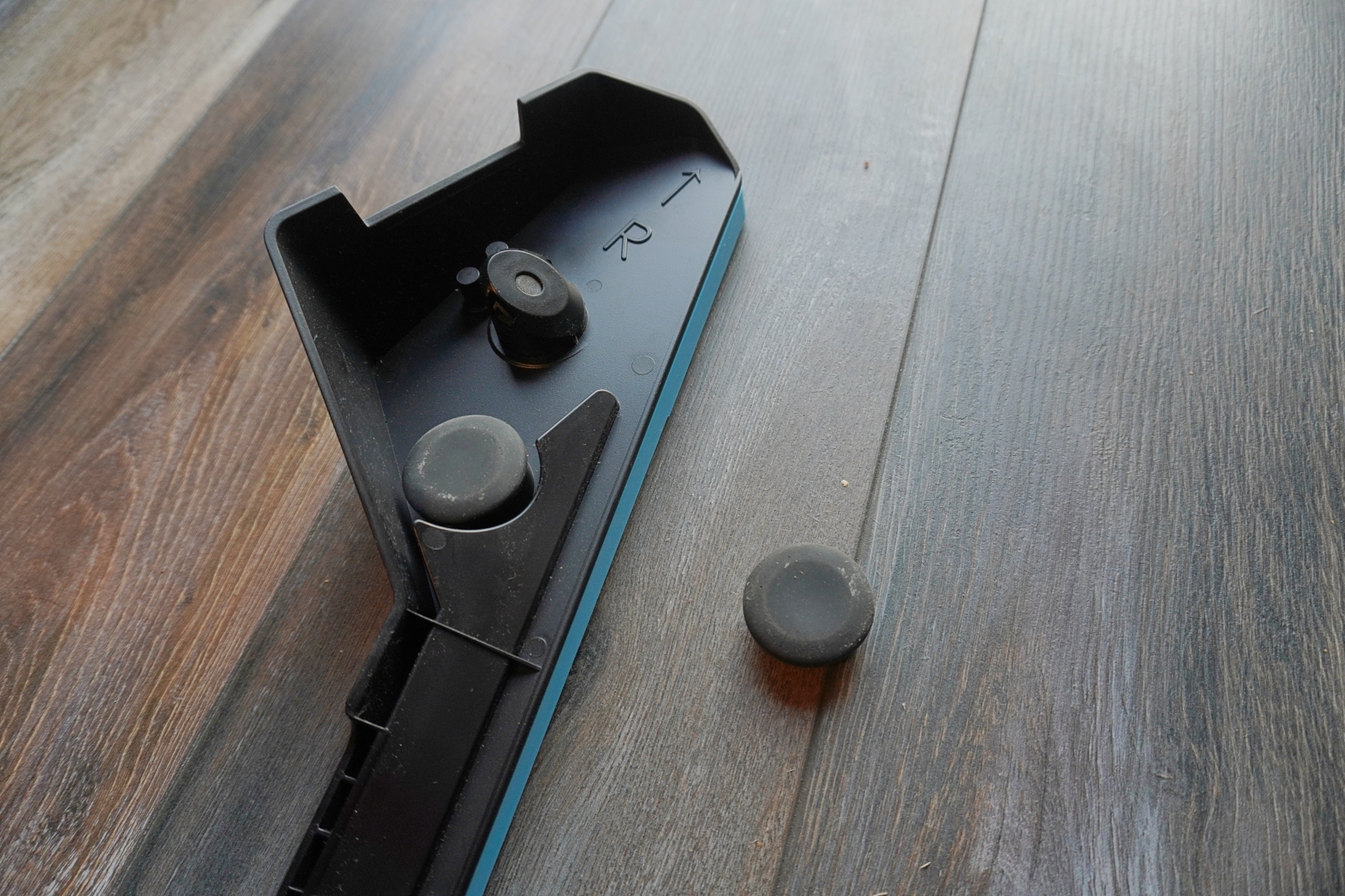
For everything from easy spinning through tempo, threshold and up to VO2 intensity, so long as I was seated, those efforts were much more enjoyable to tap out.
Out of the saddle, though, was quite a different story. I have a tendency to spend quite a lot of my time standing on the pedals when riding indoors, but that just didn’t seem to mesh well with the Motion Plates.
Riding outside, the movement and rocking of the bike when out the saddle feels like it's complementing the pedal strokes, giving you something to lean into and push against. But with the Motion Plates, I just felt out of phase and as if the bike was getting away from me – quite the contrast to the feeling when seated.
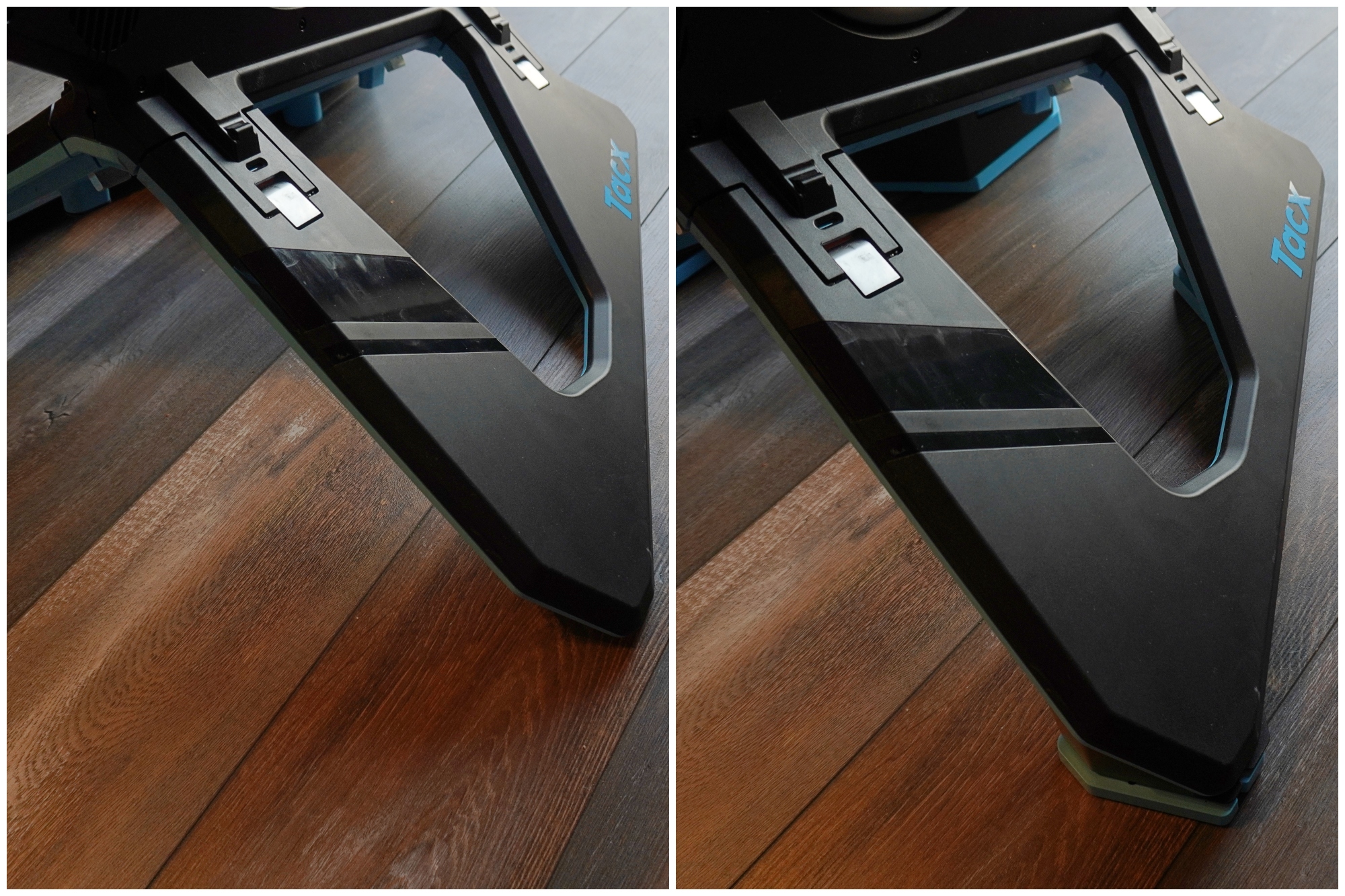
Left: Tacx Neo 2T with no plates. Right: Tacx Neo 2T with Motion Plates
At least the plates are very easy to take on and off, so clipping them on for tempo and threshold sessions and taking them off for e-racing or higher end anaerobic efforts doesn’t feel like too much of an imposition – although if you’re only getting use of out them in half of your sessions, their value for money would be proportionately less.
With a retail price of £259.99 / $299.99 the plates do cost a fair chunk of money – it is the same price as a Garmin Edge 530 cycle computer. But in the context of rocker plates, it is pretty in line with the rest of the market.
LifeLine offers a rocker plate that costs £179.99 / $349.99, but this doesn’t do the forwards and backwards movement. Omnirocker sells a rocker plate that does do the forwards and backwards movement and costs over twice as much at £549.00. Also, in being a board, it’s not so easy to pack away, but having not tested it ourselves we can’t comment on how the ride feel compares.

After winning the 2019 National Single-Speed Cross-Country Mountain Biking Championships and claiming the plushie unicorn (true story), Stefan swapped the flat-bars for drop-bars and has never looked back.
Since then, he’s earnt his 2ⁿᵈ cat racing licence in his first season racing as a third, completed the South Downs Double in under 20 hours and Everested in under 12.
But his favourite rides are multiday bikepacking trips, with all the huge amount of cycling tech and long days spent exploring new roads and trails - as well as histories and cultures. Most recently, he’s spent two weeks riding from Budapest into the mountains of Slovakia.
Height: 177cm
Weight: 67–69kg